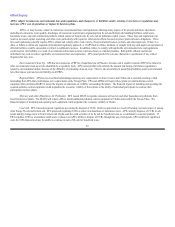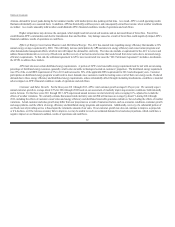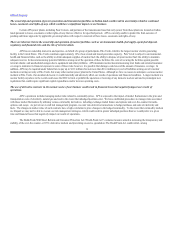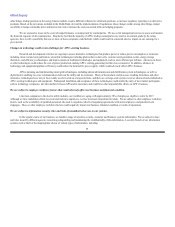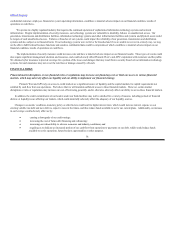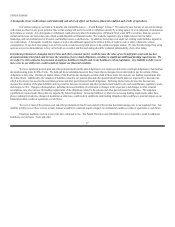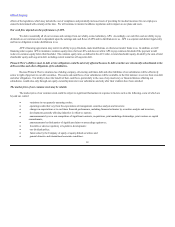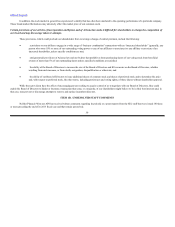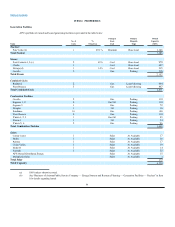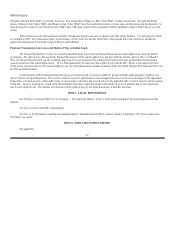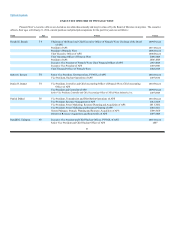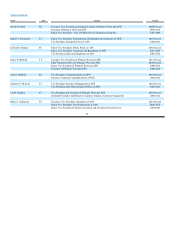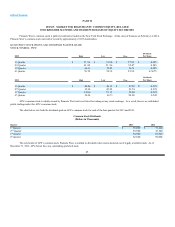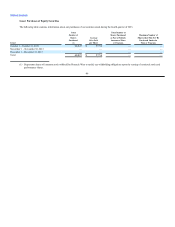APS 2013 Annual Report Download - page 41
Download and view the complete annual report
Please find page 41 of the 2013 APS annual report below. You can navigate through the pages in the report by either clicking on the pages listed below, or by using the keyword search tool below to find specific information within the annual report.
Table of Contents
effects of the legislation, which may include the cost of compliance and potentially increased costs of providing for medical insurance for our employees,
cannot be determined with certainty at this time. We will continue to monitor healthcare legislation and its impact on our plans and costs.
Our cash flow depends on the performance of APS.
We derive essentially all of our revenues and earnings from our wholly-owned subsidiary, APS. Accordingly, our cash flow and our ability to pay
dividends on our common stock is dependent upon the earnings and cash flows of APS and its distributions to us. APS is a separate and distinct legal entity
and has no obligation to make distributions to us.
APS’s financing agreements may restrict its ability to pay dividends, make distributions or otherwise transfer funds to us. In addition, an ACC
financing order requires APS to maintain a common equity ratio of at least 40% and does not allow APS to pay common dividends if the payment would
reduce its common equity below that threshold. The common equity ratio, as defined in the ACC order, is total shareholder equity divided by the sum of total
shareholder equity and long-term debt, including current maturities of long-term debt.
Pinnacle West’s ability to meet its debt service obligations could be adversely affected because its debt securities are structurally subordinated to the
debt securities and other obligations of its subsidiaries.
Because Pinnacle West is structured as a holding company, all existing and future debt and other liabilities of our subsidiaries will be effectively
senior in right of payment to our debt securities. The assets and cash flows of our subsidiaries will be available, in the first instance, to service their own debt
and other obligations. Our ability to have the benefit of their cash flows, particularly in the case of any insolvency or financial distress affecting our
subsidiaries, would arise only through our equity ownership interests in our subsidiaries and only after their creditors have been satisfied.
The market price of our common stock may be volatile.
The market price of our common stock could be subject to significant fluctuations in response to factors such as the following, some of which are
beyond our control:
· variations in our quarterly operating results;
· operating results that vary from the expectations of management, securities analysts and investors;
· changes in expectations as to our future financial performance, including financial estimates by securities analysts and investors;
· developments generally affecting industries in which we operate;
· announcements by us or our competitors of significant contracts, acquisitions, joint marketing relationships, joint ventures or capital
commitments;
· announcements by third parties of significant claims or proceedings against us;
· favorable or adverse regulatory or legislative developments;
· our dividend policy;
· future sales by the Company of equity or equity-linked securities; and
· general domestic and international economic conditions.
38



